Serge Poliakoff was born in Moscow on the 21st of January 1900. His Father, Georges Nicolaévitch Poliakoff, was a horse breeder of Kyrgyz origin. During a stay in Toula, Georges Poliakoff met Agrippine Stroukoff, the daughter of landowners and granddaughter of the General Stroukoff. The couple got married after George kidnaped her by horse. They had fourteen children, Serge being the thirteenth one. The family, very united, lived in Moscow, where his father was a horse supplier for the Russian army and owned a racing stable. One of his sisters, Vera, much older than Poliakoff, widow of the Moscow police commissioner Volossovski, was particularly found of Serge. From a very young age, Poliakoff was influenced by Vera’s personality. Another one of his older sisters was married to Prince Galitzine and lived in Saint-Petersbourg. Serge Poliakoff often visited them.
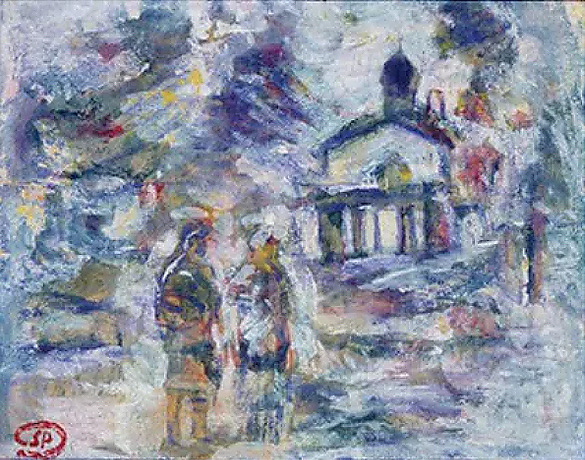
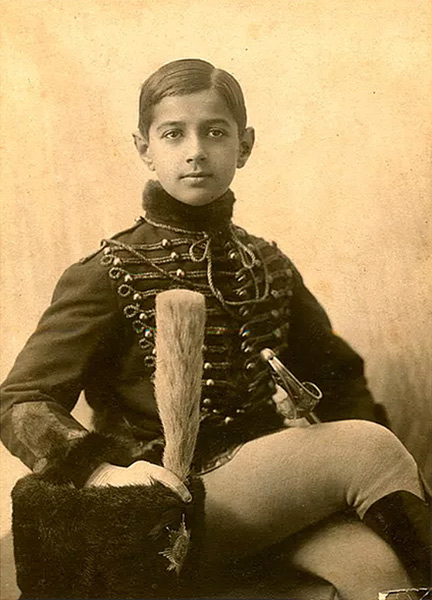
He started to take drawing lessons in Moscow. He spent his holidays in Naltchik, at his brother-in-law’s house, Serge Kissikev, who had as a preceptor one of Tchekhov’s younger brothers.The Kissilev family allegedly served as a model for Techekov’s painting «La Cerisaie». As a teenager, Poliakoff painted his first landscapes in Naltchik, exactly where Levitan, the leader of the Russian landscape painters, used to work. Poliakoff’s childhood was divided between his family life in Moscow, where he discovered religious icons while going to Church with his very pious mother, his cultural and aristocratic life with the Galitzines in Saint-Petersbourg, and with his sister Vera, who was hosting a literary parlor and his holidays on the Black Sea coast. He traveled in the south of Russia as far as Caucasia. With little interest in studies, he enjoyed reading more and discovered at an early age not only Russian literature but also all the western classics, thanks to the very well-stocked library of his brother Anatoly, his «spiritual guide». It was also Anatoly, a trained singer, who instilled Poliakoff the taste of opera and music. From the age of twelve, Poliakoff already played the guitar. Furthermore, he was fascinated by mathematics and algebra.
The Russian revolution ended this whole era.
Beginning of the exile through Russia and Caucasia.
Dimitri, Serge, Nastia Poliakoff and cousin Galitzine in Tiflis, Caucasia, 1919.
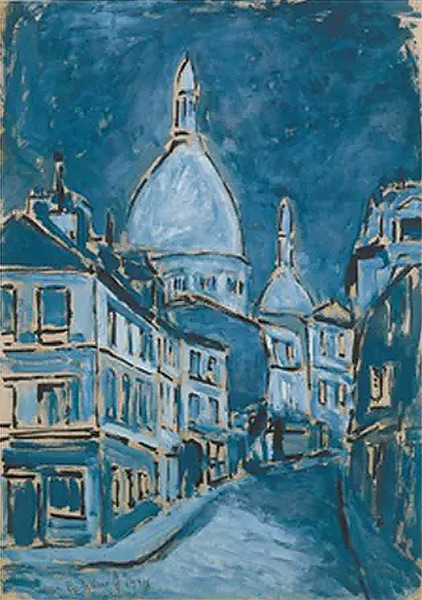
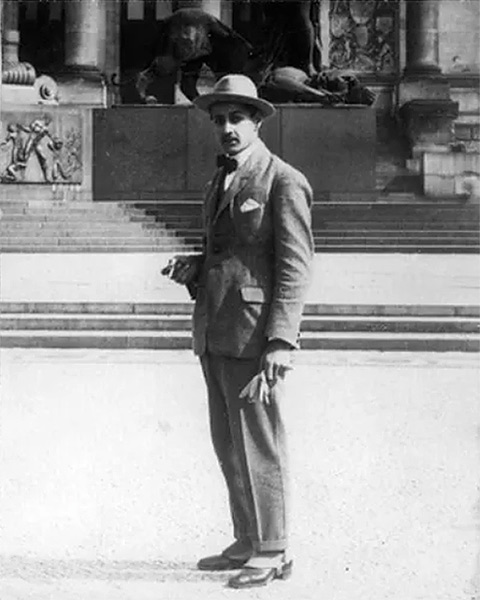
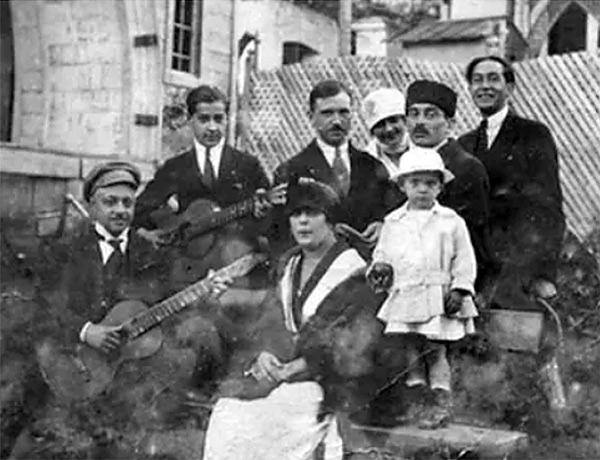
Poliakoff was a refugee in Constantinople with his aunt, the famous singer Nastia Poliakoff, whom he accompanied on the guitar. From this moment, the guitar became his livelihood, and that for more than thirty years. He traveled in Europe with his aunt and his uncle, Nastia and Dimitri. After Constantinople, they lived in Sofia, Belgrade, Vienna, and Berlin where they stayed two years, before reaching Paris. As he will later confess to André Malraux, Serge Poliakoff felt that he had finally found a home as he set a foot in Paris.
He settled in Paris.
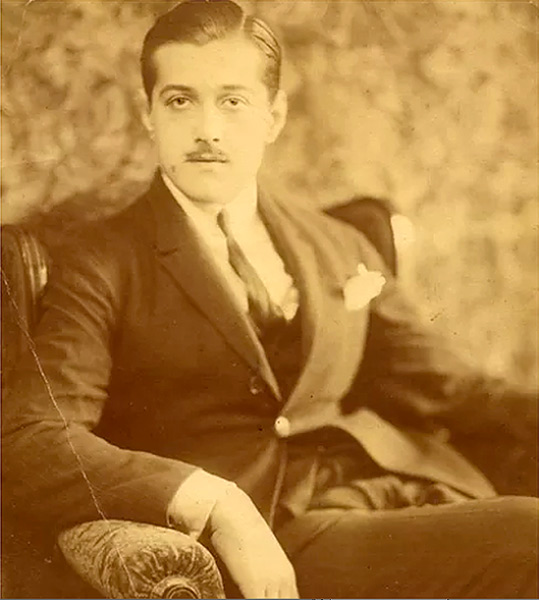
After following several classes from various academies, he regularly worked at la Grande Chaumière in Montparnasse.
His work was exhibited for the very first time, with a group, at the Galerie Drouant. Every day, he dedicated several hours of work to painting. From this era, nothing remains, either for he painted several times the same canvas or because his work was scattered. A few reproductions published in Russian newspapers from and for emigrants in Paris, as well as a reproduction published in the catalog from Drouant, Paris, showed his academic learning of painting, through nudes and a male portrait.
He worked at the Académie Frochot in Montmartre. His masters were Othon Friesz, Cosson and Ivan Cerf. At night, he doubled Elvire Popesco on the guitar in the play Tovaritch at the Théâtre de Paris.
Poliakoff left Paris for London, where he took classes at the Slade School of Art for two years. He got married with Marcelle Perreur-Lloyd, a woman from French and Irish origins who had lived in London for years. During those years in London, he took part in several movies as a guitarist. According to his own words, frequent visits to London museums helped him find himself. His preferences already geared toward Italians primitives painters, such as Cimabue, Giotto, Simone Martini. He was also interested in the Flemish school and Impressionism.
Velasquez and Cezanne, Gauguin and Seurat caught his eye. Among the modernists, he liked Klee for his sense of composition, and Juan Gris, who, as Poliakoff will later confide, «was already abstract, unlike Picasso and Braque». During this Londonian period, the Egyptians sarcophagus displayed at the British Museum were a revelation for Poliakoff. The proportions of the sarcophagus’ paintings were food for thoughts. The colour and substance puzzled him to the point that, one day, taking advantage of the guard’s absence, he scratched a corner to see the exact colour of the successives layers.
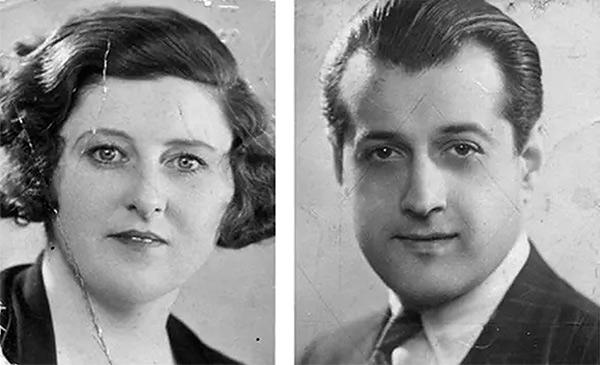
Serge Poliakoff settled for a less confortable life in Paris, with a better artistic prospects and atmosphere. First exhibition at the Galerie Zak. He met Kandinsky, living in Paris after the closure of the Bauhaus. Even though he admired Kandisky’s work and was attracted to non-figurative art, Poliakoff was still confused by Kandisky’s theoretical vision of abstract art by then.
Poliakoff’s work was exhibited at the Salon des Indépendants; he was represented there until 1945. He met Sonia and Robert Delaunay, with whom he became a very close friend. From that time, he visited them once a week, on a fixed day. During those meetings, Delaunay was teaching his audience, explaining his painter friends his theories about simultaneous contrast.
Without influencing directly Poliakoff's work, Delaunay’s words about abstract art helped Poliakoff to progress. Soon, he exhibited his first abstract canvas at the Galerie «Le Niveau à Paris». Kandinsky was the first to recognize the qualities of the young abstract painter. « For the future, I bet on Poliakoff» Kandinsky said. The same year, Poliakoff met Otto Freundlich too: the man, the abstracted gravity of his painting impressed him very deeply.
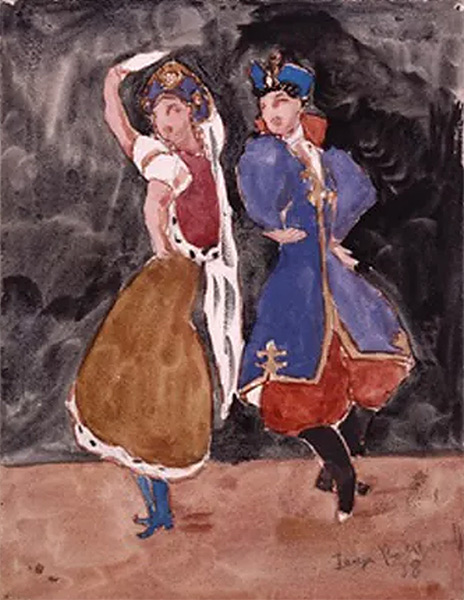
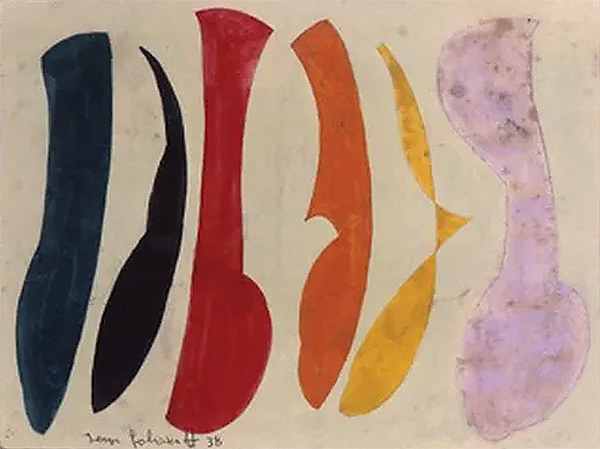
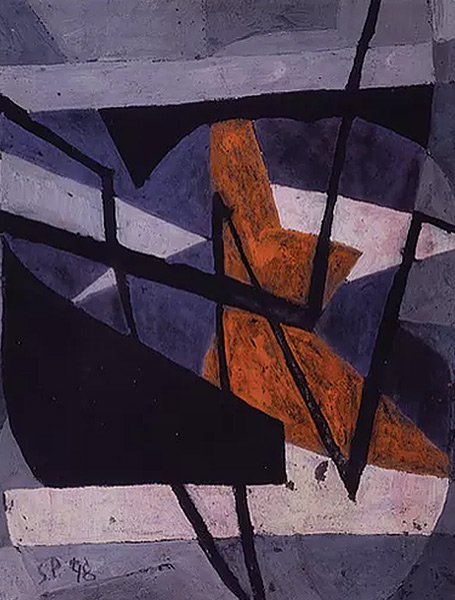
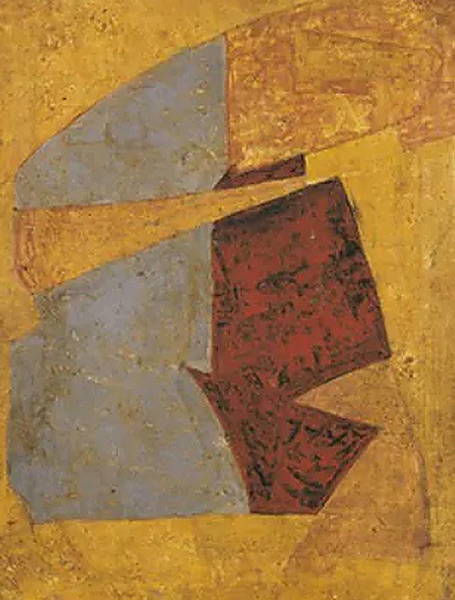
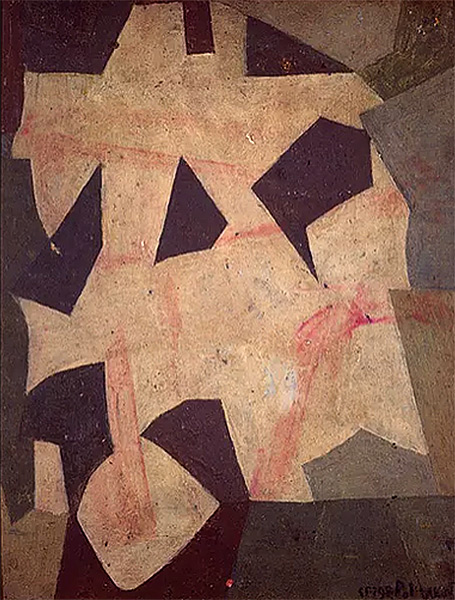
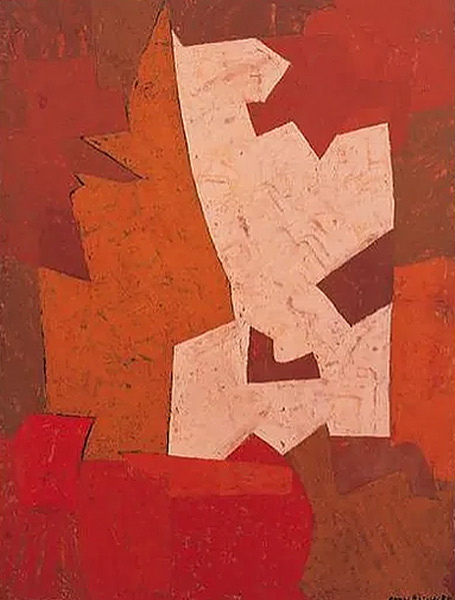
Birth of his son Alexis.
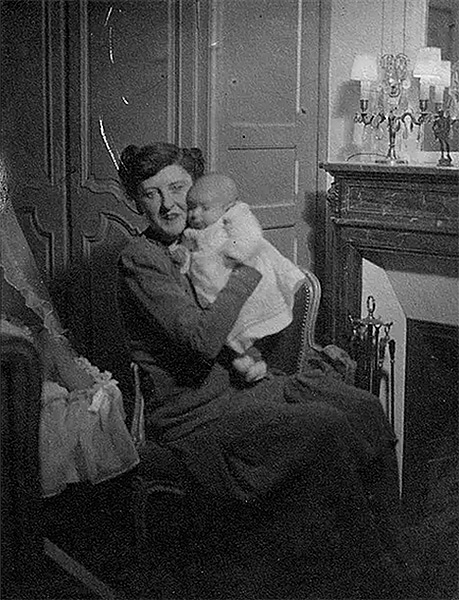
Poliakoff’s first abstract painting exhibition (work from 1942 to 1945) took place at the Galerie de l’Esquisse. The critic Frédéric Noël mentioned the emergence of the new abstract painter in his exhibition section. The critic Guy Domand noticed too the participation of Poliakoff to the Salon des Réalités Nouvelles.
At the insistence of Domela, Poliakoff took part in two exhibitions organised in La Salle du Centre de Recherches of Paris, rue Cujas, who was gathering by then the abstract painting avant-gardists. During the first exhibition, his work was displayed along with Engel-Park and Marie Raymond’s work. This exhibition then served as an illustration for Herbin’s conference on the evolution of painting. For his second exhibition of the year, Poliakoff’s work included gouaches, drawings and watercolors. Simultaneously and in parallel with the exhibition, Wilhem Uhde was holding a conference about greek metaphysic and modern physic as the cornerstones of a new humanism. Among the exhibitors, the work of Kandinsky, Herbin, Domela, Dewasne, Deyrolle, Hartung, Marie Raymond and Schneider were also displayed. The same year, Poliakoff’s work was exhibited at the Galerie Denise René with Duthoo, Alfred Reth, Marie Raymond and Poujet. His participation at the Salon de Mai was also noted. At the Salon des Surindépendants, his participation rose Charles Estienne’s concern. In the meantime, and to make a living, Poliakoff was creating very successfully fabrics’ drawings, but he shortly decided to stop, afraid that his painter’s work would suffered from this side activity. However, he was still playing the guitar every night in a Russian cabaret in Paris.
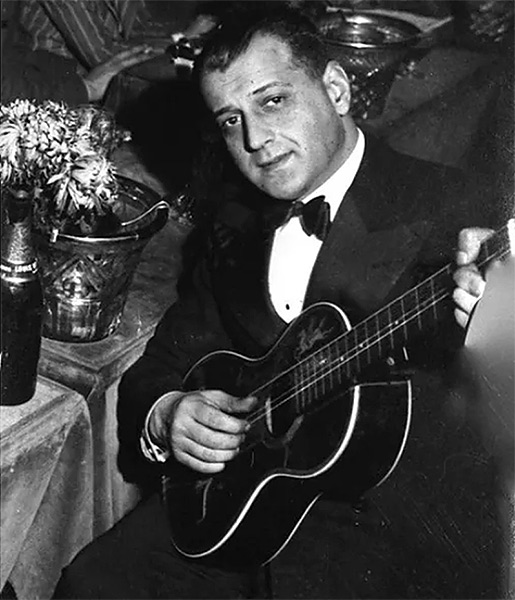
He received the Kandinsky Price, created by Nina Kandinsky and aimed to encourage young abstract painters.
Poliakoff took part in different exhibitions held by the Galerie Denise René in Paris and, later, in Scandinavian countries. His first special exhibition abroad occurred in Copenhagen, at the Galerie Tokanten, ran by Gauguin’s grandson. The Musée de Grenoble bought him a painting, his first work got into a museum.
He exhibited his paintings at the Galerie Denise René and his gouaches at the Galerie de Beaune. He participated to the Salon de Mai. Parisian critics followed and noticed his evolution. Frank Elgar emphasized in the publication «Carrefour» his «preference» for Poliakoff’s canvas at the Salon de Mai.
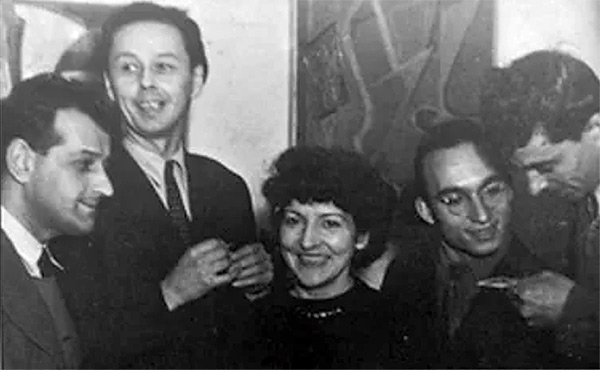
He exhibited his recent artworks at the Galerie Dina Vierny and took part in differents group exhibitions in Paris and abroad (England, Japan).
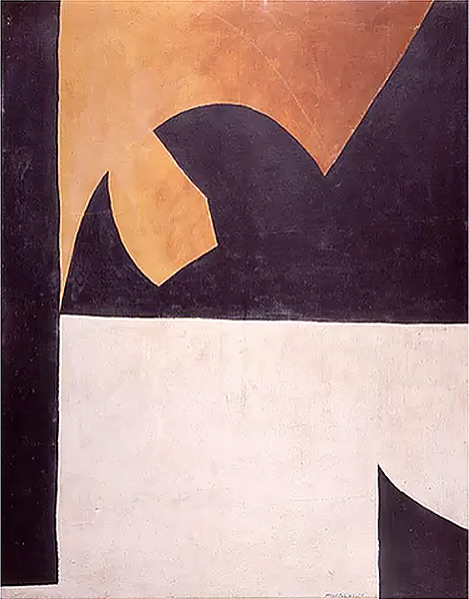
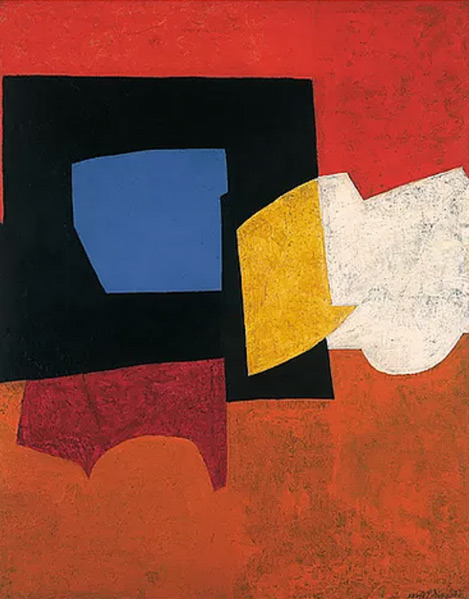
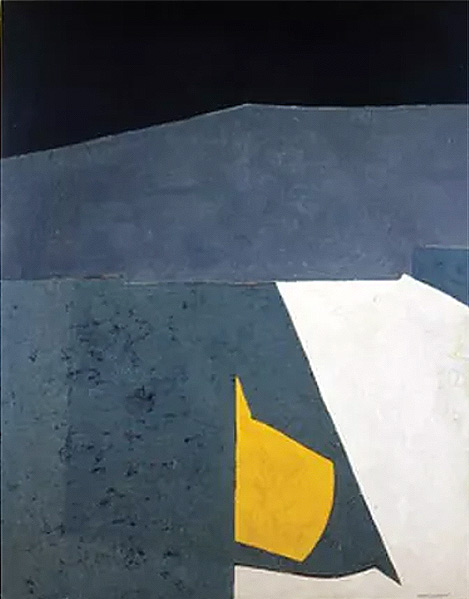
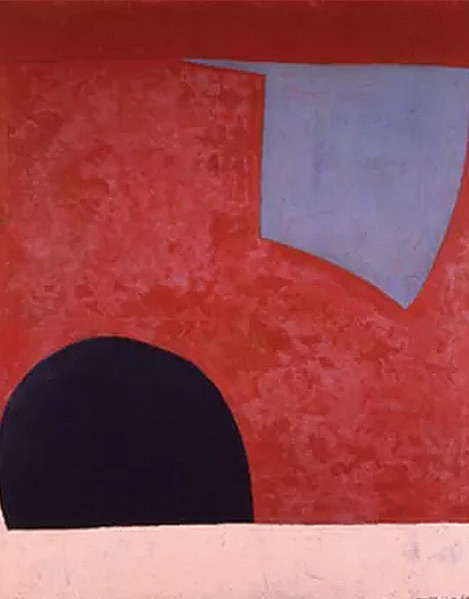
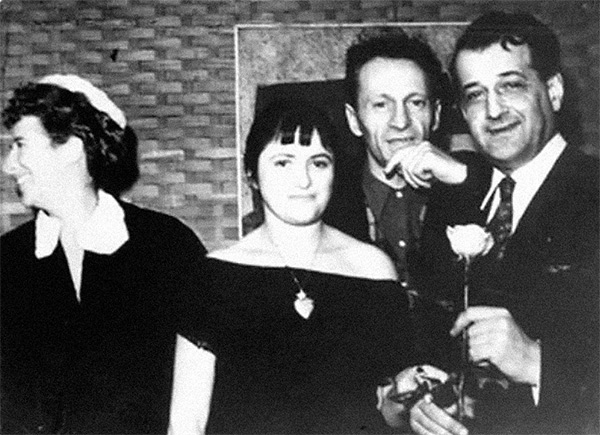
His exhibitions increased. His work already had trustly collectors. He stopped playing music as a profession and stayed focus on painting thanks to a contract with the Galerie Bing. The same year, he had the opportunity to see two Malevitch’s canvas, including «White square on white background» owned by the Museum of Modern Art of New York, at the exhibition «L’Art du XXe Siècle», organised at Le Musée d’Art Moderne de Paris. This was a real shock and a confirmation for Poliakoff, who then stated : « He (Malevitch) proved me once more the crucial role of the matter’s vibration. Even if it has no colour, a canvas where matter vibrates stays alive». Poliakoff spent the summer at Gordes, Vaucluse, where he painted a fresco in Charles Estienne’s house.
His first big exhibition (45 paintings and 5 gouaches) was held by the APIAW in Liège, Belgium, at the Palais des Beaux-Arts de Bruxelles and at the Musée Verviers. His first special exhibition in America took place at the Galerie Circle & Square in New York, managed by Jean Larcade.
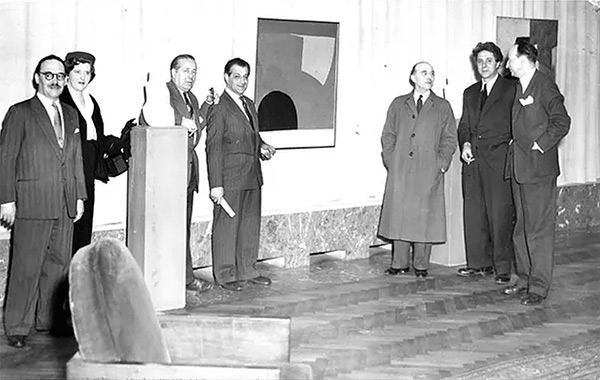
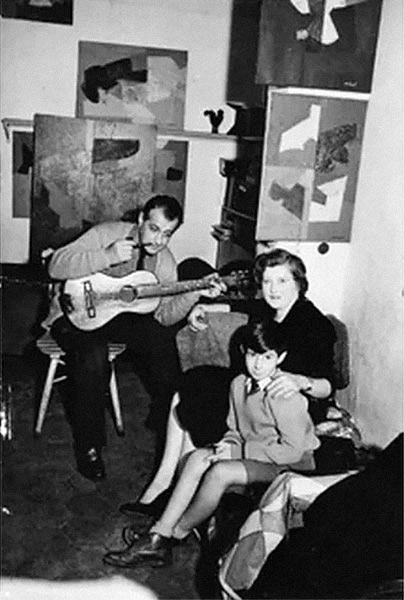
His special exhibitions increased, as well as his participation to global exhibitions in France and abroad.
Second special exhibition in the United States, at the Galerie Knoedler in New York.
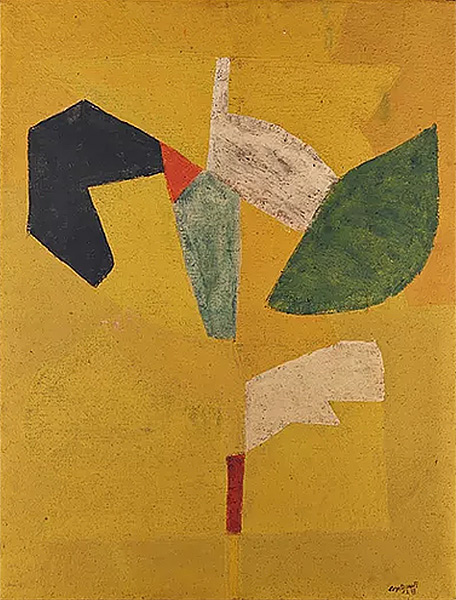
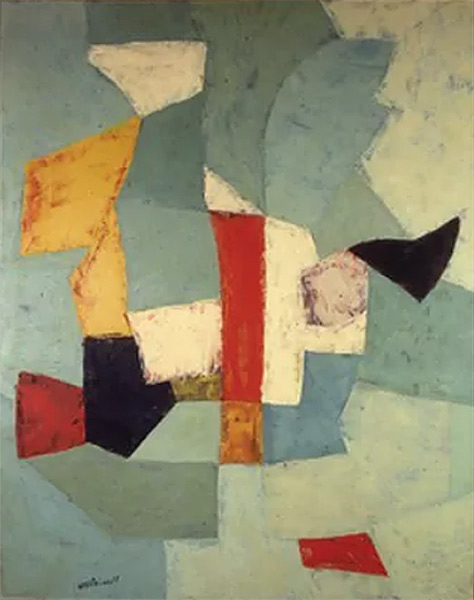
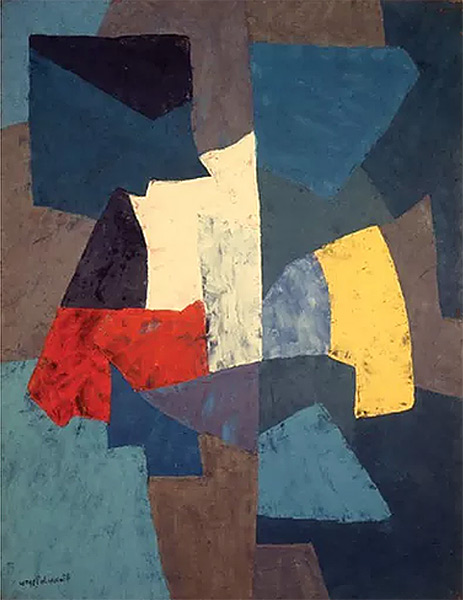
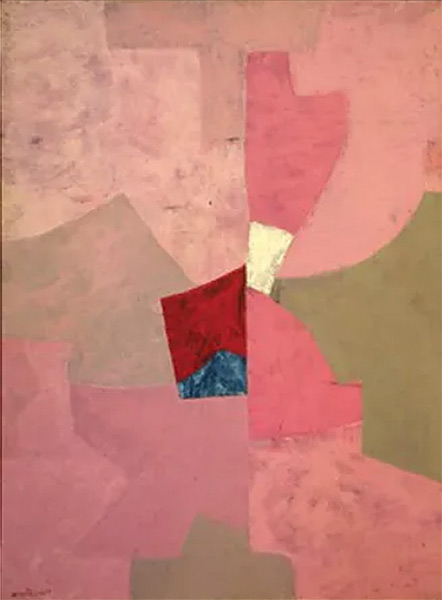
Received the Lissone Price.
Decor for the Contrepoint ballet, Marius Constant’s music, Roland Petit’s choreography. Along with his successive personal exhibitions in France and abroad (in Switzerland, Scandinavian, German and British museums), he took part in major international events (Documenta II and III; International Exhibition of Contemporary Painting, Carnegie Institute, Pittsburgh; 30 ans d’Art Moderne, Brussels).
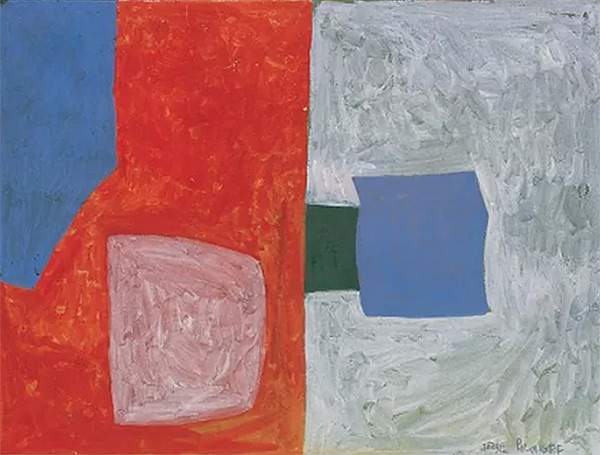
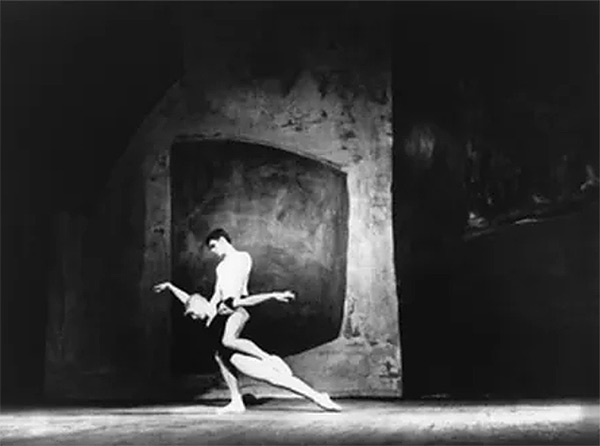
He had the opportunity to see for the first time the whole Malevitch’s artwork during the exhibition organised at Berne’s Kunsthalle by Fran Mayer. He was deeply impressed. Two of his canvas on projection were used as decor for Jean Tardieu – Jacques Poliéri’s show at the Théâtre de l’Alliance française in Paris.
Poliakoff received the French nationality. He took part at the Venice Biennale where an entire room was dedicated to his artwork.
He received the International price of the Tokyo Biennale.
Grand Prix of the Menton Biennale, massive retrospective at Saint-Gall’s Kunstmuseum.
Retrospective at the Maison de la Culture in Caen.
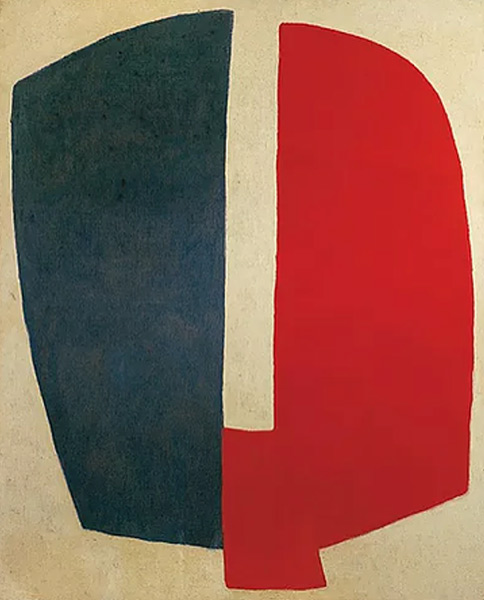
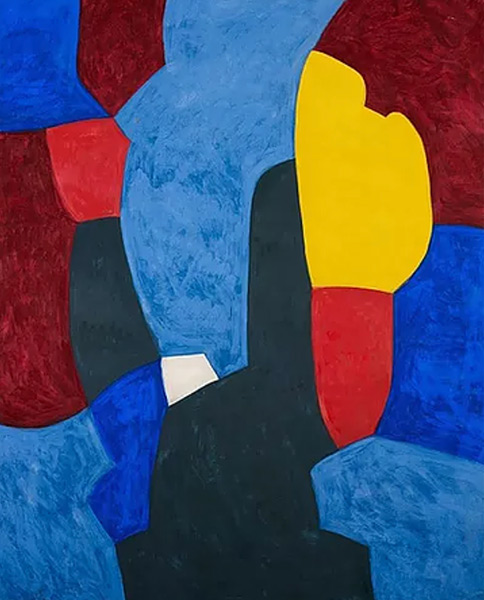
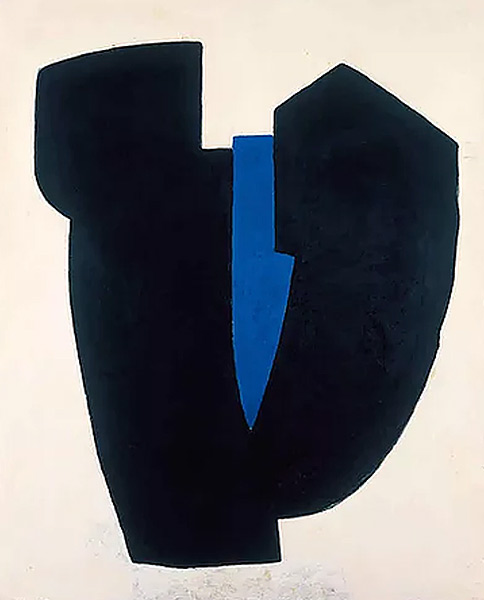
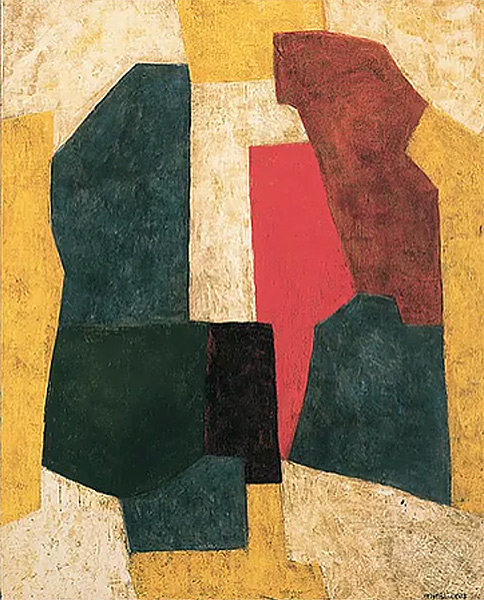
He worked to prepare his exhibition at the Musée d’Art Moderne de Paris that will finally occur in 1970. Retrospective exhibition at the Musée Despiau-Wiérick (Donjon Lacataye) in Mont-de-Marsan. In september, he traveled to Venice for his exhibition at the Galleria del Naviglio. He saw the Chapelle des Scrovegni in Padoue once again. The chromatism of Giotto’s frescos influenced his last works.
The 12th of October 1969, Poliakoff passed away in Paris.
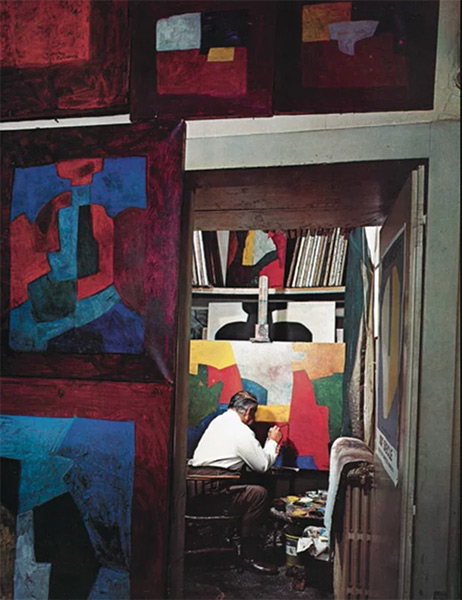

Secure payment
3DSecure 2.2

Free DHL Express delivery from €1,200
Carefully prepared parcel
Parcel tracking

Shipment insured
for the value of the artwork, covering theft and damages

Fairest prices
Certificate of authenticity
Two galleries in Paris
Receive an email as soon as a new artwork is added for this artist
Your message has been sent ! We will get back to you as soon as possible.
Please fill in the form if you need further information such
Please fill in your email address, an email will be sent with a link to update your password.
You can now place orders and track your orders.